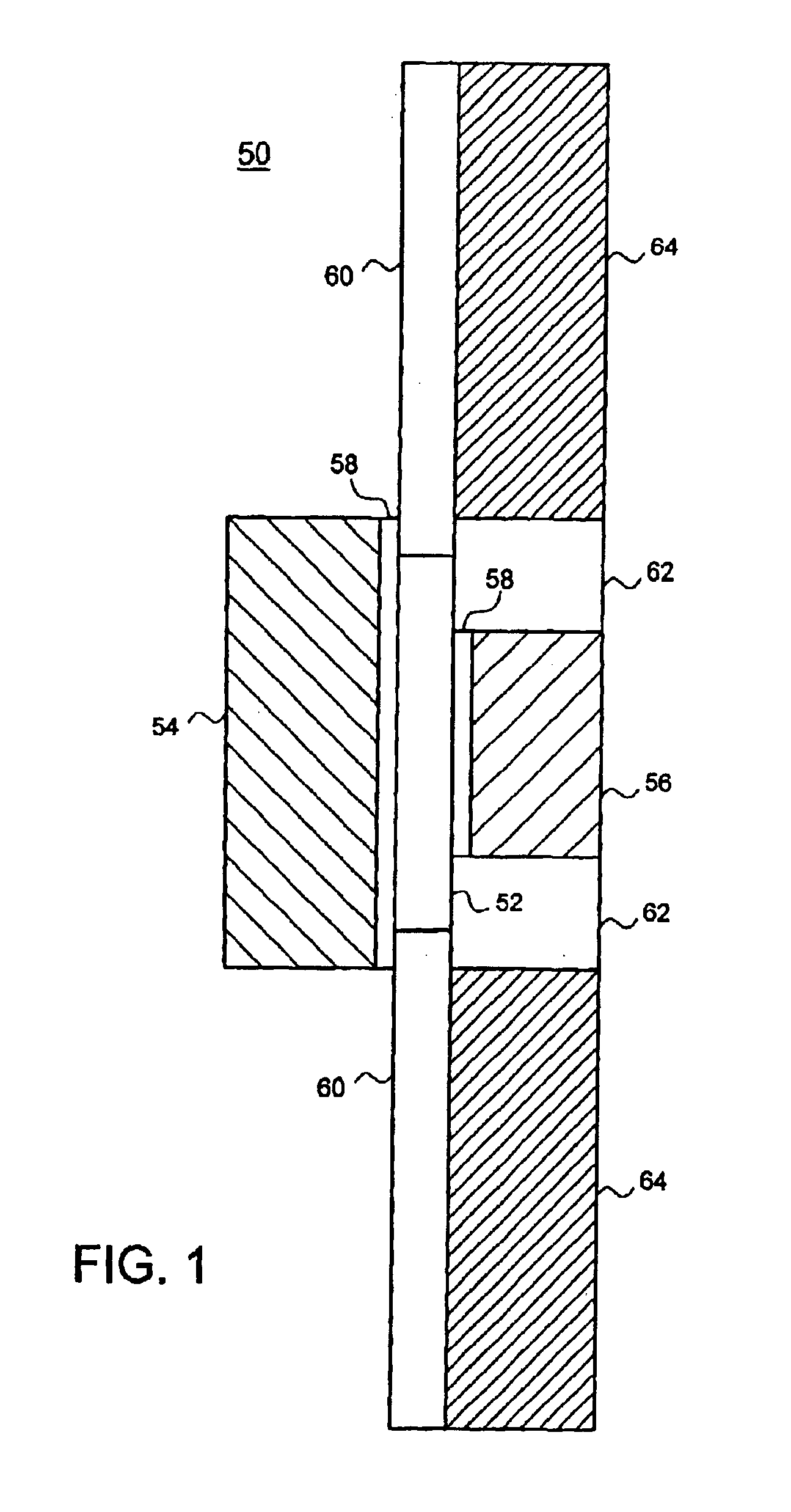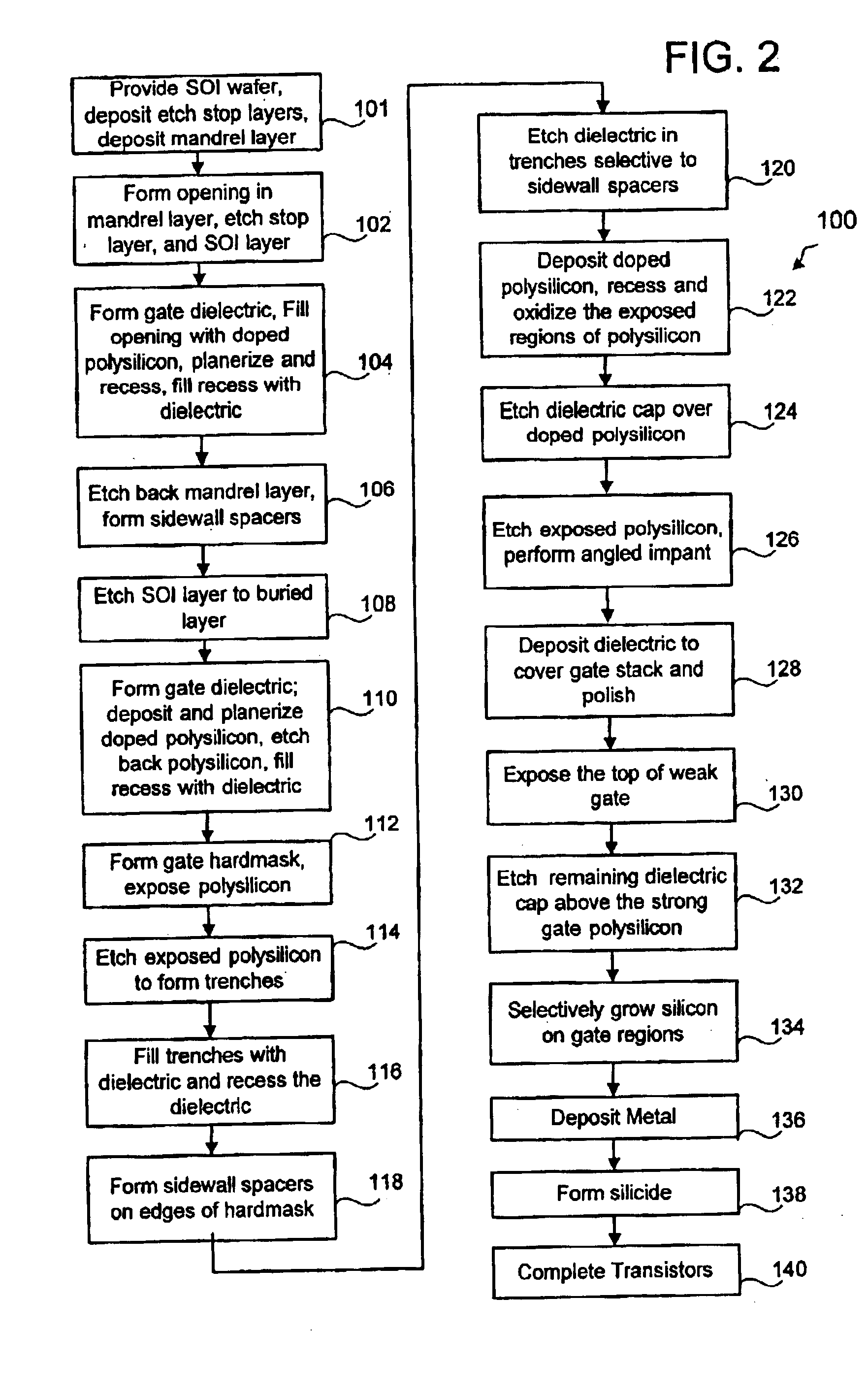Doubly asymmetric double gate transistor structure
a double gate transistor and asymmetric technology, applied in the direction of transistors, semiconductor devices, electrical equipment, etc., can solve the problems of affecting the reliability of the transistor, the design and fabrication and the reliability of the double gated cmos transistor is difficult to ensure. the effect of reliability and minimum feature siz
- Summary
- Abstract
- Description
- Claims
- Application Information
AI Technical Summary
Benefits of technology
Problems solved by technology
Method used
Image
Examples
Embodiment Construction
Accordingly, the present invention provides a double gated transistor and a method for forming the same that results in improved device performance and density. The preferred embodiment of the present invention provides a double gated transistor with asymmetric gate doping, where one of the double gates is doped degenerately n-type and the other degenerately p-type. By doping one of the gates n-type, and the other p-type, the threshold voltage of the resulting device is improved. In particular, by asymmetrically doping the two gates, the resulting transistor can, with adequate doping of the body, have a threshold voltage in a range that enables low-voltage CMOS operation. For example, a transistor can be created that has a threshold voltage between 0V and 0.5V for nFETs and between 0 and −0.5V for pFETs.
Additionally, the preferred transistor design uses an asymmetric structure that results in reduced gate-to-drain and gate-to-source capacitance. In particular, dimensions of the weak...
PUM
 Login to View More
Login to View More Abstract
Description
Claims
Application Information
 Login to View More
Login to View More - R&D
- Intellectual Property
- Life Sciences
- Materials
- Tech Scout
- Unparalleled Data Quality
- Higher Quality Content
- 60% Fewer Hallucinations
Browse by: Latest US Patents, China's latest patents, Technical Efficacy Thesaurus, Application Domain, Technology Topic, Popular Technical Reports.
© 2025 PatSnap. All rights reserved.Legal|Privacy policy|Modern Slavery Act Transparency Statement|Sitemap|About US| Contact US: help@patsnap.com



